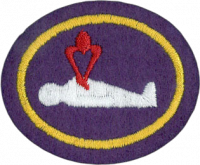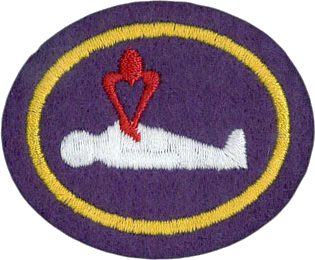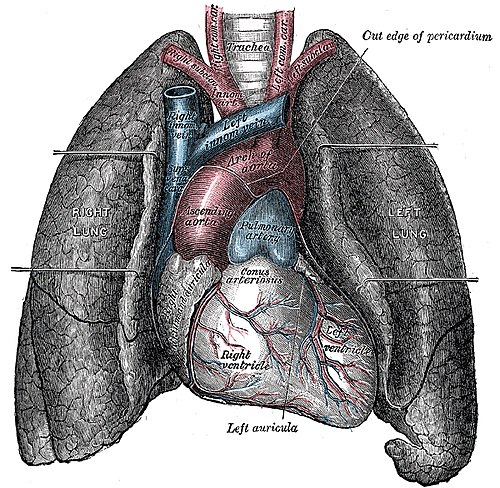Difference between revisions of "AY Honors/CPR/Answer Key/es"
From Pathfinder Wiki
(Created page with "{{clear}}") |
|||
| (12 intermediate revisions by 2 users not shown) | |||
| Line 1: | Line 1: | ||
| − | + | {{HonorSubpage}} | |
| − | |||
| − | {{ | ||
| − | |||
| − | |||
| − | |||
| − | |||
| − | |||
| − | |||
| − | |||
| − | |||
| − | |||
| − | |||
| − | |||
| − | |||
| − | |||
<section begin="Body" /> | <section begin="Body" /> | ||
{{ansreq|page={{#titleparts:{{PAGENAME}}|2|1}}|num=1}} | {{ansreq|page={{#titleparts:{{PAGENAME}}|2|1}}|num=1}} | ||
| Line 20: | Line 5: | ||
<!-- 1. Completar con éxito una clase, ya sea patrocinado por la Asociación Americana del Corazón, la Cruz Roja Americana, o un equivalente en virtud de un instructor certificado a fin de aprender y demostrar RCP. Esto debe ser en los últimos 12 meses. --> | <!-- 1. Completar con éxito una clase, ya sea patrocinado por la Asociación Americana del Corazón, la Cruz Roja Americana, o un equivalente en virtud de un instructor certificado a fin de aprender y demostrar RCP. Esto debe ser en los últimos 12 meses. --> | ||
| − | {{ | + | {{:AY Honors/CPR/Certification/es}} |
<noinclude></noinclude> | <noinclude></noinclude> | ||
| Line 31: | Line 16: | ||
<br style="clear:both"> | <br style="clear:both"> | ||
| − | {{clear}} | + | {{clear}} |
| − | + | {{clear}} | |
<noinclude></noinclude> | <noinclude></noinclude> | ||
| Line 53: | Line 38: | ||
{{clear}} | {{clear}} | ||
| − | + | {{clear}} | |
| − | |||
| − | |||
| − | + | {{clear}} | |
| − | + | {{clear}} | |
| − | + | {{clear}} | |
| − | |||
| − | |||
| − | |||
| − | |||
| − | |||
| − | |||
| − | |||
| − | |||
| − | |||
<noinclude></noinclude> | <noinclude></noinclude> | ||
| Line 78: | Line 52: | ||
<!-- 5. Desarrollar, mantener y llevar un registro de un programa personalizado en ejercicio, la salud y hábitos alimentarios por un mes. --> | <!-- 5. Desarrollar, mantener y llevar un registro de un programa personalizado en ejercicio, la salud y hábitos alimentarios por un mes. --> | ||
| − | + | {{clear}} | |
<noinclude></noinclude> | <noinclude></noinclude> | ||
| Line 111: | Line 85: | ||
==Referencias== | ==Referencias== | ||
| − | |||
<noinclude></noinclude> | <noinclude></noinclude> | ||
| − | + | {{CloseHonorPage}} | |
Latest revision as of 19:43, 25 July 2022
Reanimación cardiopulmonar (RCP)
Nivel de destreza
2
Año
1986
Version
21.12.2025
Autoridad de aprobación
Asociación General
1
Completar con éxito una clase, ya sea patrocinado por la Asociación Americana del Corazón, la Cruz Roja Americana, o un equivalente en virtud de un instructor certificado a fin de aprender y demostrar RCP. Esto debe ser en los últimos 12 meses.
Puede encontrar una clase cerca de usted usando uno de los siguientes sitios web en los EE. UU., o buscar la organización equivalente en su área:
Estas organizaciones brindan una excelente capacitación, pero cobran. Es posible encontrar personas certificadas para enseñar resucitación cardiopulmonar y que cobren más bajo. Comuníquese con su Coordinador de área de Conquistadores para ver si conocen a algún miembro del personal de Conquistadores dentro de su asociación que esté calificado para ofrecer esta clase.
2
Conocer y comprender la ubicación y función del corazón y los pulmones.
3
Definir RCP y decir cinco condiciones en las que se utilizaría.
4
Entender el programa Prudent Heart Living [Estilo de vida saludable cardiaca]. Hacer una lista de cinco cosas que una persona puede hacer para mantener un corazón sano.
5
Desarrollar, mantener y llevar un registro de un programa personalizado en ejercicio, la salud y hábitos alimentarios por un mes.
6
Conocer el significado de los colores y el diseño utilizado por la insignia simbólica de esta especialidad como sigue:
6a
La persona que necesita RCP es de color blanco, significa que no hay circulación.
6b
La persona que da la RCP es de color rojo, significa una persona viva.
6c
El fondo púrpura significa lealtad o compromiso.
6d
El borde de oro habla del valor de la vida humana.
6e
Un corazón está formado por la cabeza, hombros y brazos de la persona que desempeña el RCP, que significa compasión por otro individuo.



